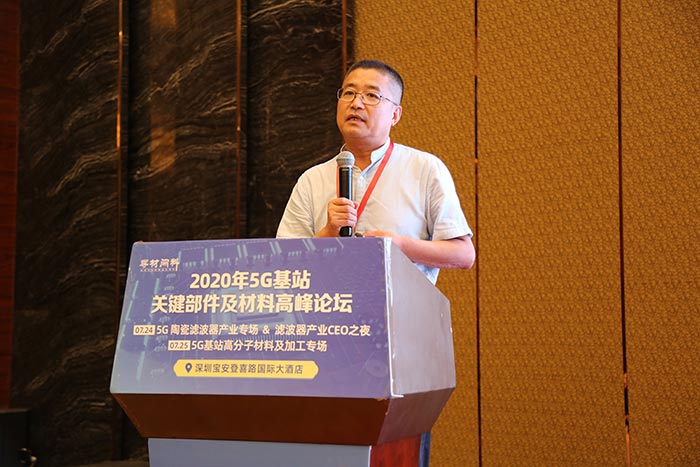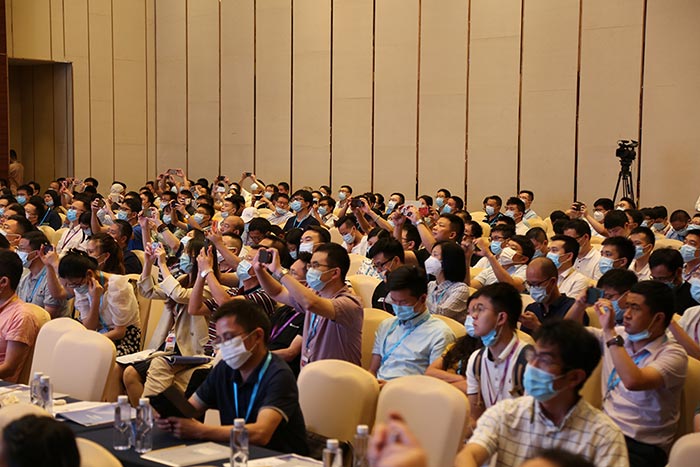5G communication is not a simple upgrade of 4G communication, but a qualitative leap in communication methods.
Data shows that 5G is 100 times faster than 4G, meaning a high-definition movie can be downloaded in one second. In addition, the 4G signal delay is 140 milliseconds, and the 5G delay is 1 millisecond. The low delay can guarantee the information exchange between the unmanned devices.
However, the transmission frequency of 5G is too high, and the signal is easy to be shielded and attenuated in the transmission medium, which puts forward high requirements on the electromagnetic shielding performance of materials and the dielectric performance of the transmission medium. Therefore, it is urgent to increase the number of 5G base stations and antennas.
On July 25, 2020, sponsored by Search Material ®, "5G Base Station Polymer Materials and Processing Special Session" of "2020 5G Base Station Key Components and Materials Summit Forum" co-organized by China Communications Industry Association, New Materials Online ®, Shenzhen 5G Industry Alliance, Shenzhen Advanced Electronic Materials International Innovation Research Institute, Baoan District 5G Industrial Technology and Application Innovation Alliance, and Measureme. Wang Wenguang, secretary general of Shenzhen Polymer Industry Association, summarized the requirements of 5G for polymer materials and gave a detailed explanation of materials with low dielectric constant.

1. 5G requirements for materials
Materials are the cornerstone of technological revolution. With the acceleration of 5G commercialization, 5G polymer materials have ushered in an explosive period.
Wang summarized three characteristics related to the materials, and pointed out the requirements of 5G for polymer materials.
One is low dielectric, the dielectric constant (Dk) and dielectric loss of the transmission medium material should be small, the mobile phone Dk should be less than 3, the base station Dk should be less than 4; The second is high shielding, requiring the electromagnetic shielding ability of the material to be stronger, volume resistivity is less than 10Ω, electromagnetic shielding greater than 75dB; Third, high thermal conductivity, timely heat dissipation, good thermal conductivity of the material, thermal conductivity is greater than 1000W/m-K.
"PTFE, PPO, LCP, MPI and other materials are widely used in 5G, mainly due to the good dielectric properties of the materials." Wang Wenguang said.
Dielectric constant is an indicator of power. With the decrease of dielectric constant, the signal transmission speed will increase, the electromagnetic wave signal delay will decrease, and the electromagnetic wave signal transmission loss will also decrease.
Therefore, the selection of low dielectric constant material is very important to the performance of the device.
2. How to choose low dielectric materials
At the meeting, Wang Wenguang comprehensively explained how to select suitable low dielectric constant materials according to application requirements, focusing on three topics: low dielectric constant resin, composite modification of resin with air and composite modification of low dielectric constant materials.

Low dielectric resin can be divided into general plastics, engineering plastics and special engineering plastics. Among the general plastics, the dielectric constant of fluorine plastics is lower; In the field of engineering plastics, the dielectric constant of PPO is low; In special engineering plastics, the dielectric constant of LCP is low.
5G has a very high requirement on low dielectric constant, and many low dielectric resin materials are difficult to meet the requirements, so modification may be a good choice. "The first option for modification is to combine resin with air," Wang said.
He said that resin and air composite microfoaming modification, resin and air containing microporous materials such as composite modification, are a good way to modify.
"5G should be at least two times more than 4G base stations. The number of antennas accepted by 5G terminals will increase from four in 4G to eight in 5G. It is believed that low dielectric constant materials will be used much more than 4G materials." Wang Guangwen said.


